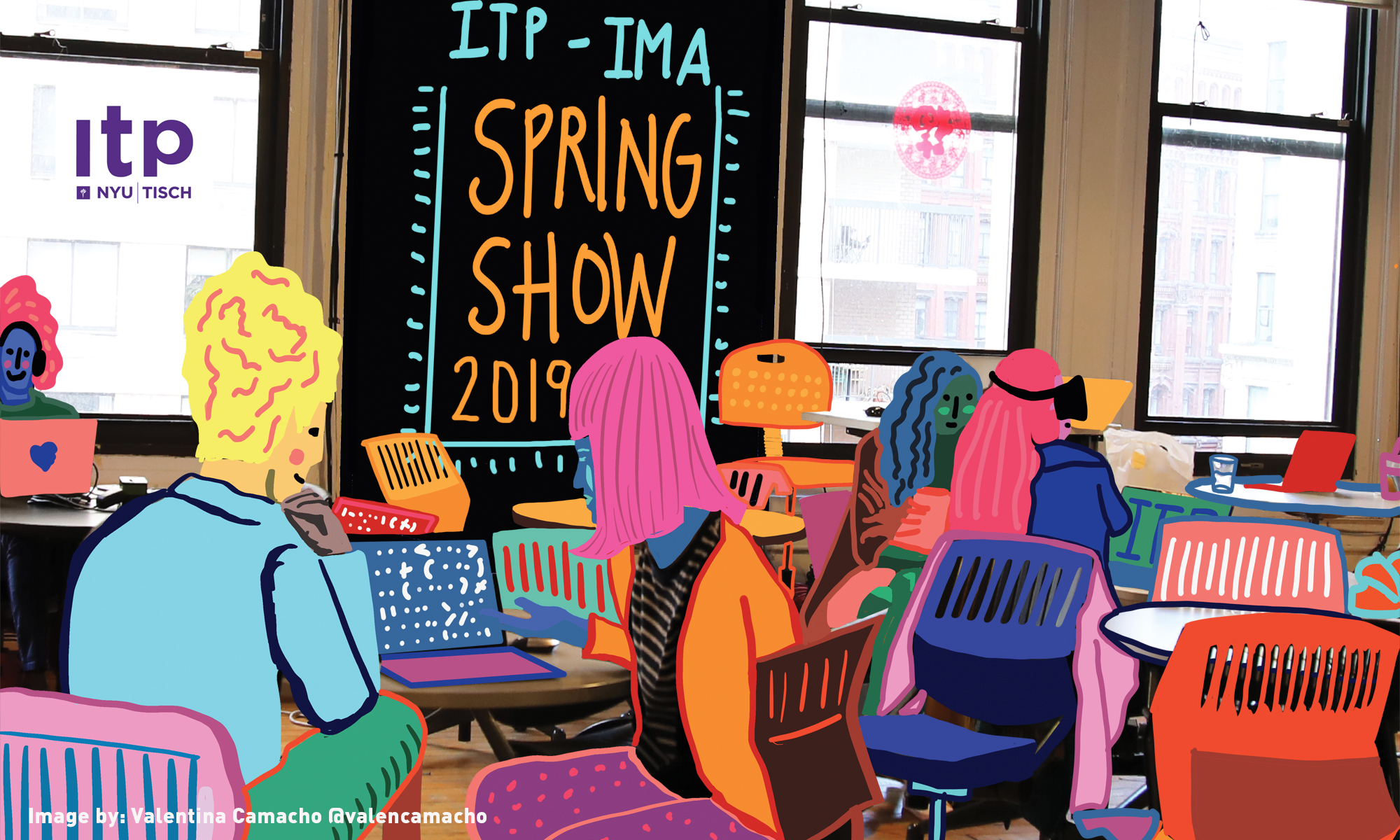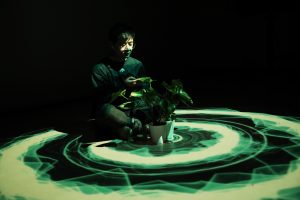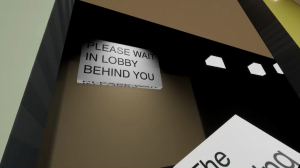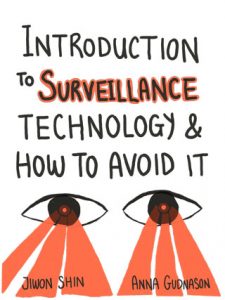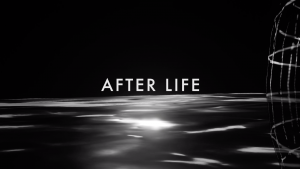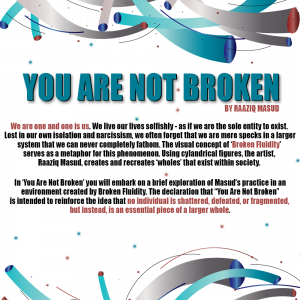Raaziq Brown
You Are Not Broken is a virtual environment and physical display showcasing select pieces of digital artwork and paintings that I made during my 100 Days of Broken Fluidity.
https://https://vimeo.com/334464350
Description
We are one and one is us. We live our lives selfishly – as if we are the only entity that exists. Lost in our own isolation and narcissism, we often forget that we are mere specks in a larger system and environment that we cannot nearly fathom. This reality is true for all other things around us, as well. I have created the visual concept of ‘Broken Fluidity’ to serve as a metaphor for this phenomenon. I use cylindrical figures, also referred to as ‘pieces’ or ‘pipes’, to create and recreate wholes that exist within society. These wholes can range from words to blatant abstractions to cartoon characters, but each work is representative of the idea that many distinct pieces, aspects, and qualities come together to create what we perceive as complete entities.
In You Are Not Broken, I use the medium of virtual reality to create an interactive experience that takes users on an adventure through an environment completely inspired by Broken Fluidity. With pathways created out of BF pieces and 3 gallery rooms presenting Masud’s digital artwork, this experience will serve as a showroom for the emerging artist. Tapping into abstraction, nostalgia, and representation of oppressed groups, Brown’s work displayed in You Are Not Broken takes a step into his mind and discipline during a time in which he studied Broken Fluidity for 100 straight days. The declaration that ‘You Are Not Broken’ is intended to reinforce the idea that no individual is shattered, defeated, or fragmented, but instead, each individual is an essential piece of the larger whole which we consider the universe.
Classes
100 Days of Making, The Poetics of Space
